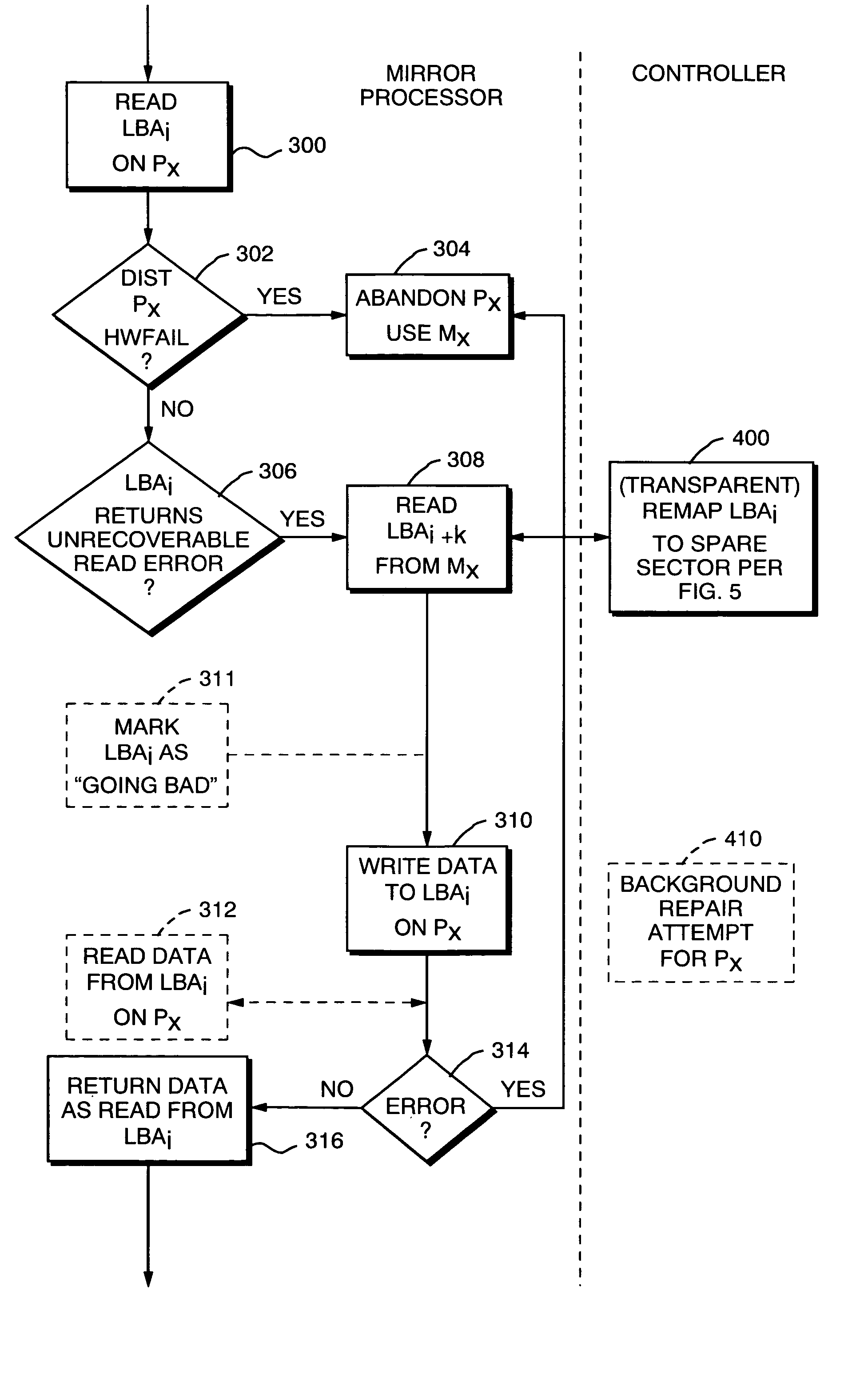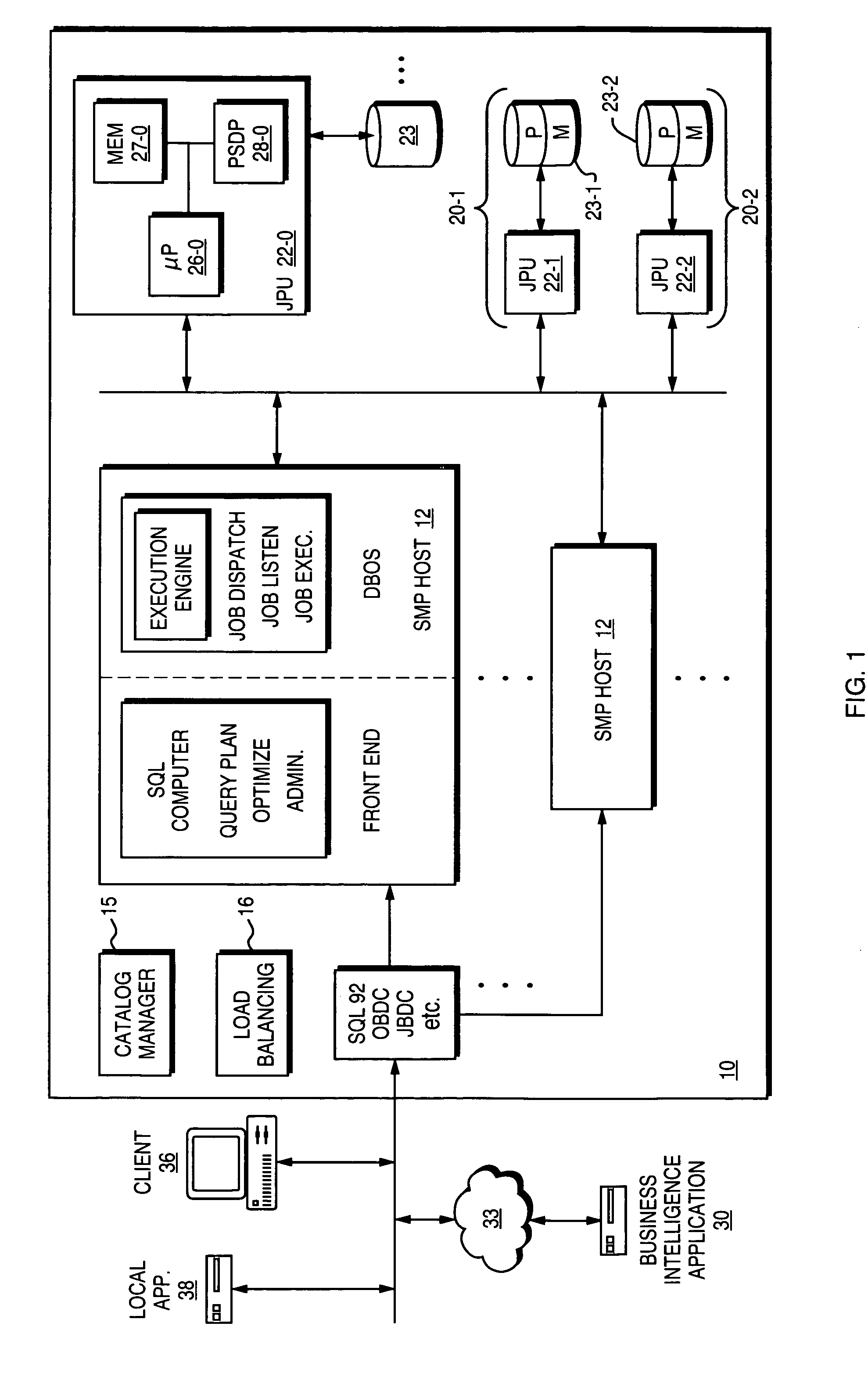Rapid regeneration of failed disk sector in a distributed database system
a database system and disk sector technology, applied in fault response, recording signal processing, instruments, etc., can solve the problems of inefficient handling of raid 1 storage system, waste of approach, disruptive,
- Summary
- Abstract
- Description
- Claims
- Application Information
AI Technical Summary
Benefits of technology
Problems solved by technology
Method used
Image
Examples
Embodiment Construction
[0027]The present invention is a disk error recovery scheme for a mirrored disk system. The invention can be used in a number of applications; what will be described here is its use in a distributed database system, although the invention can be quite useful in file servers, web servers, and other systems that may have arrays of redundant disks.
[0028]As more particularly shown in FIG. 1, a database system 10 consists of one or more host computers 12, each with its own memory, network interface, and local storage (not shown in FIG. 1). Each host 12 runs its own operating system, and typically, but not necessarily, each host 12 uses the same type of operating system as the other hosts 12. The hosts 12 may be arranged in a Symmetric Multiprocessing (SMP) topology, for example.
[0029]The hosts 12 typically accept queries that are requests for data stored on mass storage devices, such as hard disk drives 23. Queries are typically provided in a format such as Structured Query Language (SQL...
PUM
 Login to View More
Login to View More Abstract
Description
Claims
Application Information
 Login to View More
Login to View More - R&D
- Intellectual Property
- Life Sciences
- Materials
- Tech Scout
- Unparalleled Data Quality
- Higher Quality Content
- 60% Fewer Hallucinations
Browse by: Latest US Patents, China's latest patents, Technical Efficacy Thesaurus, Application Domain, Technology Topic, Popular Technical Reports.
© 2025 PatSnap. All rights reserved.Legal|Privacy policy|Modern Slavery Act Transparency Statement|Sitemap|About US| Contact US: help@patsnap.com



